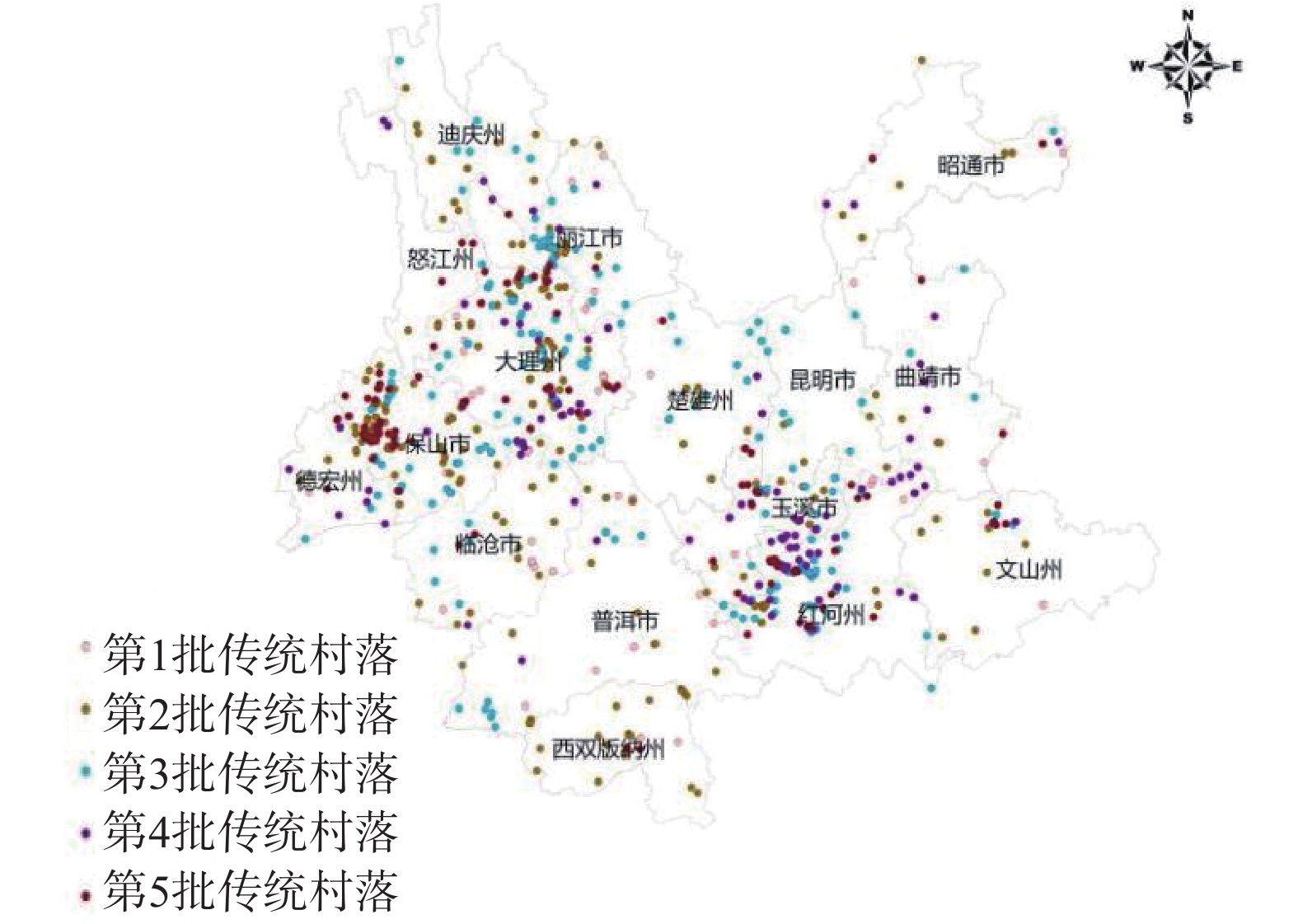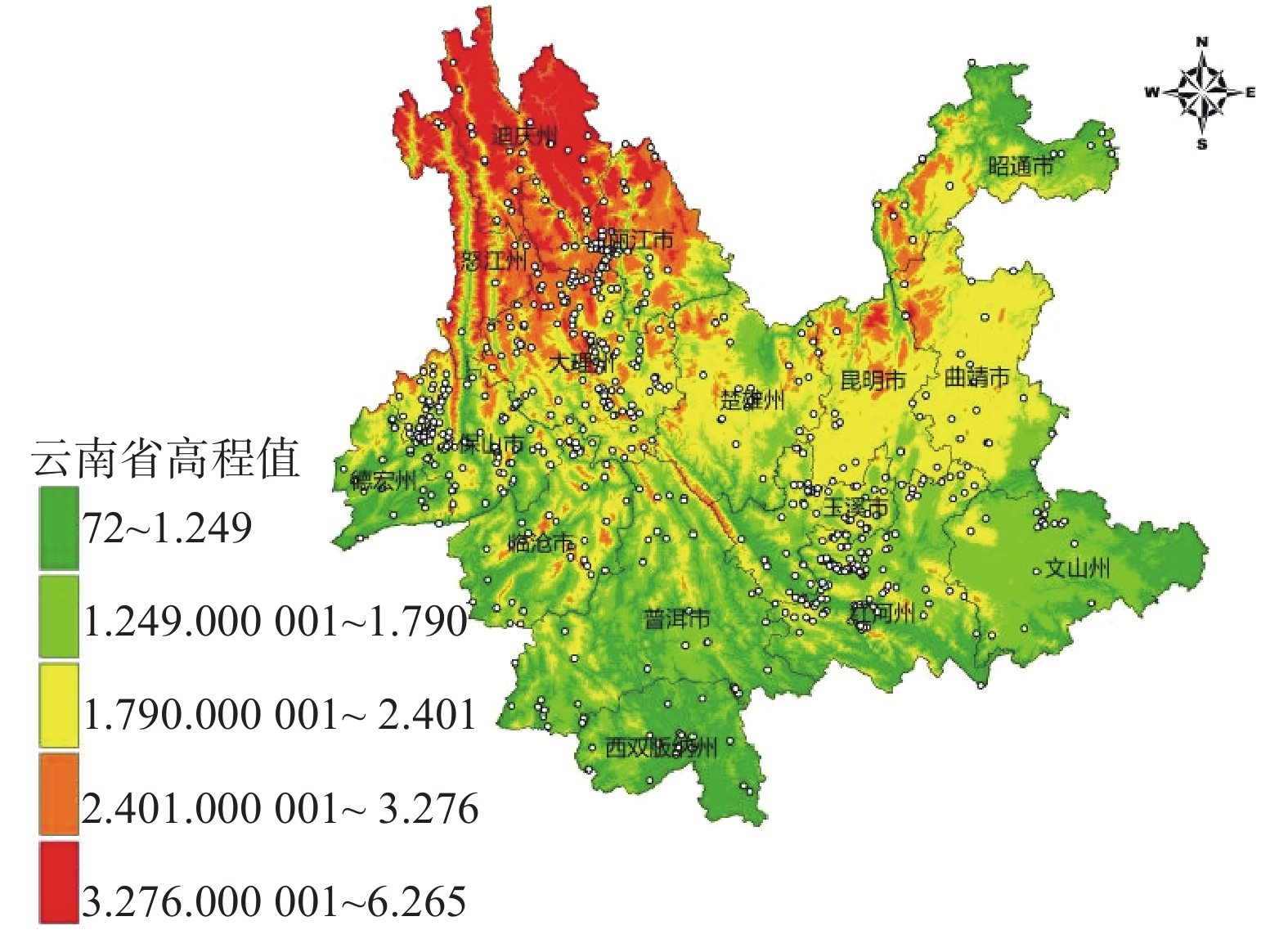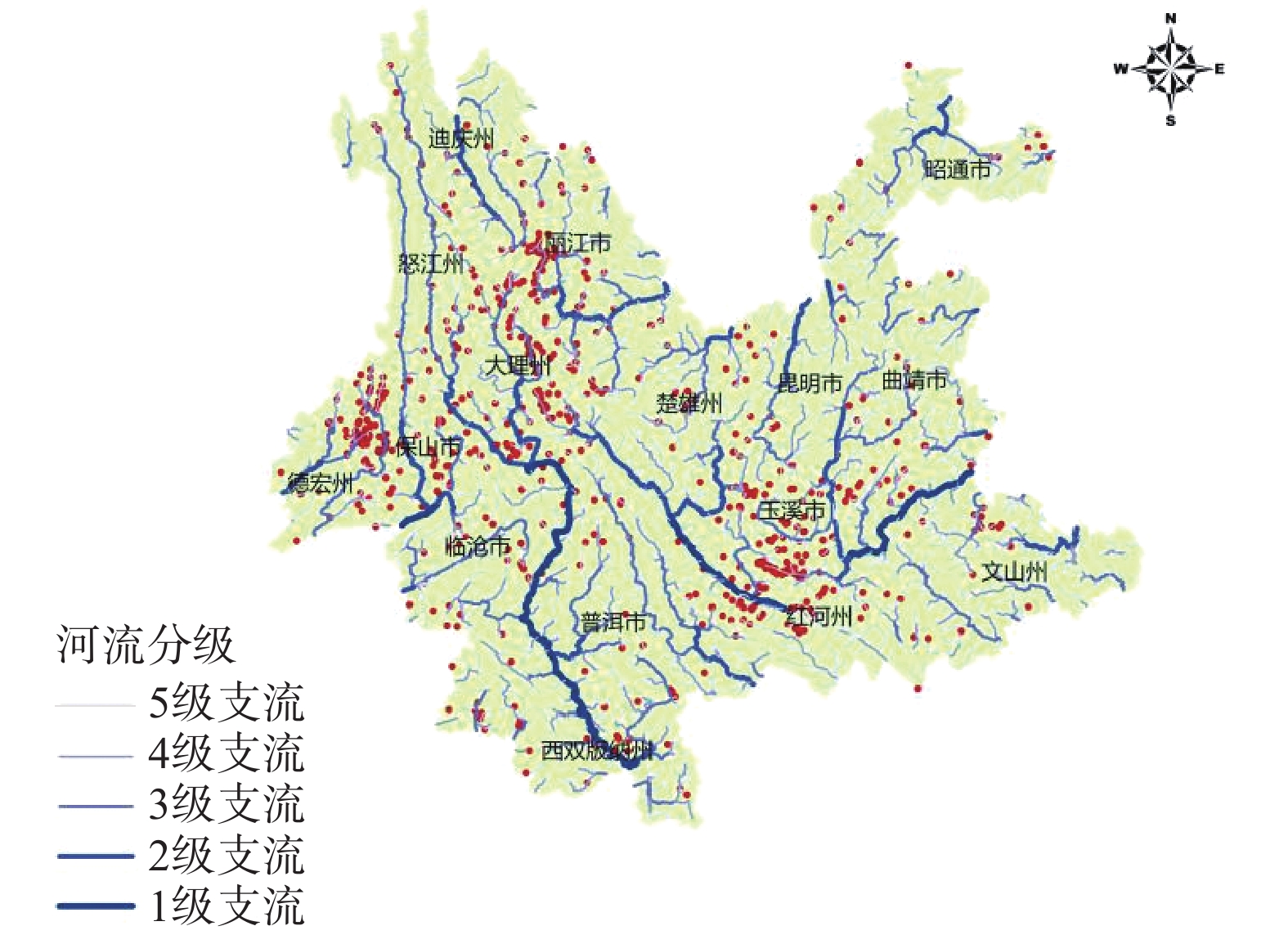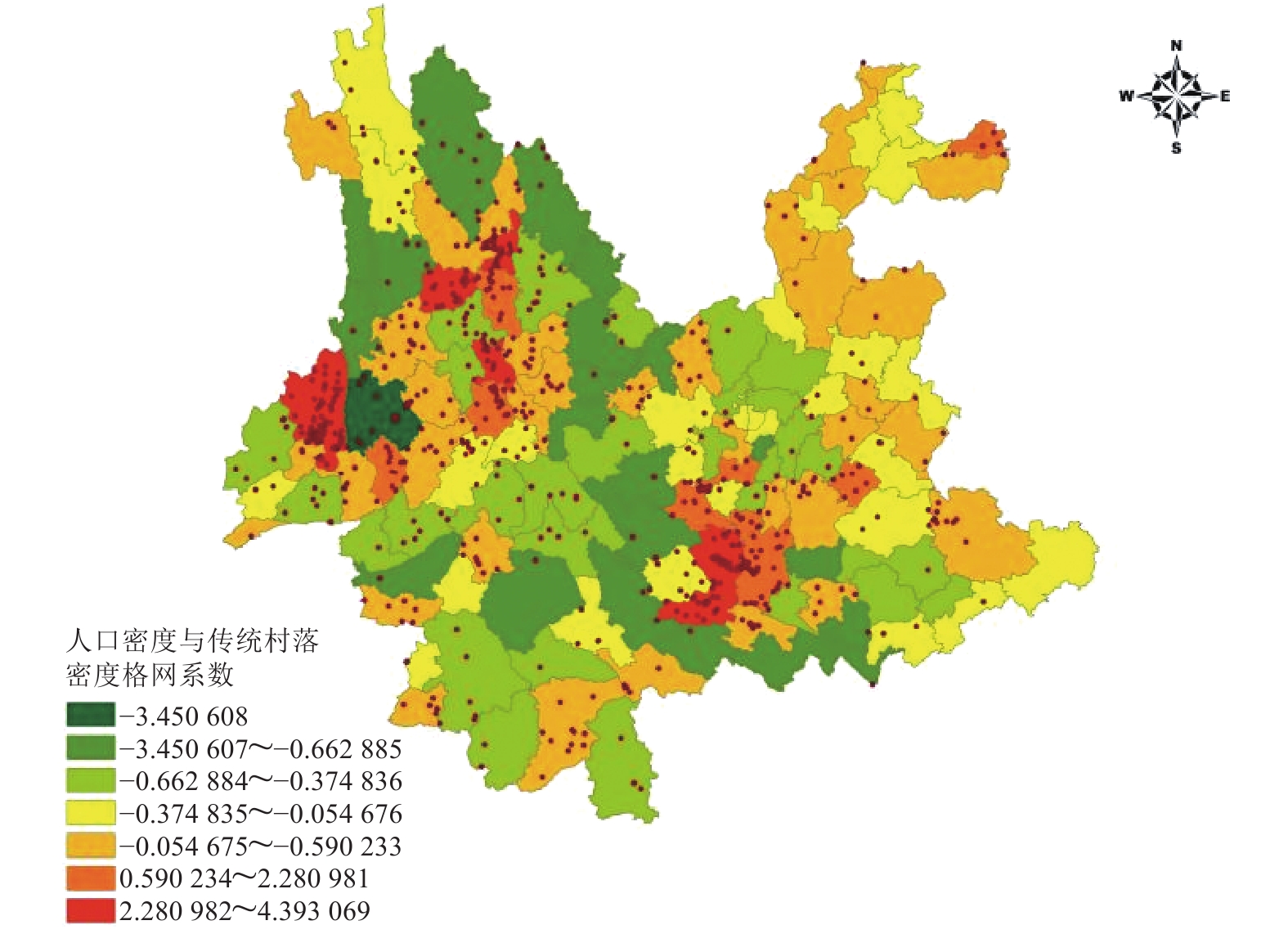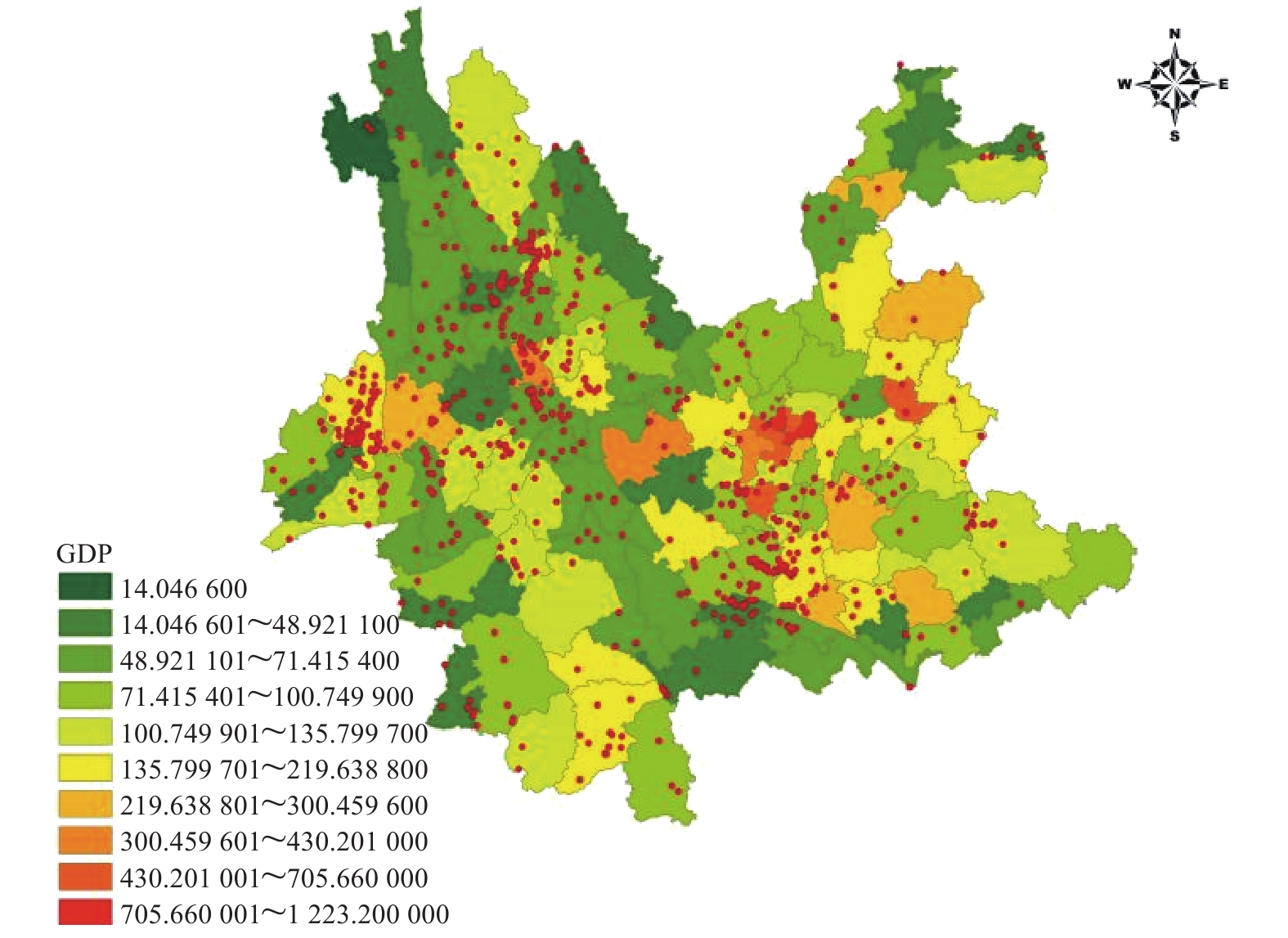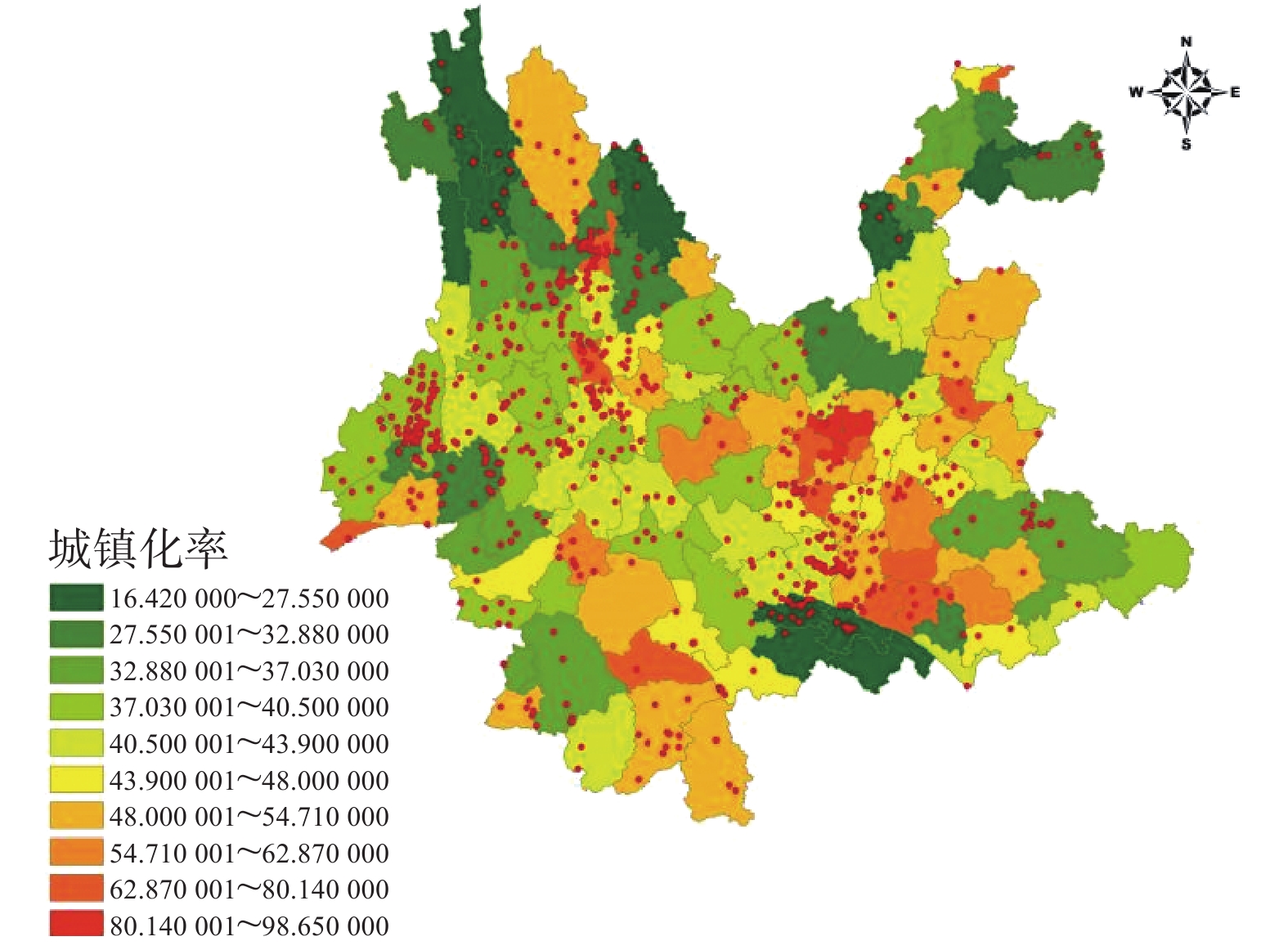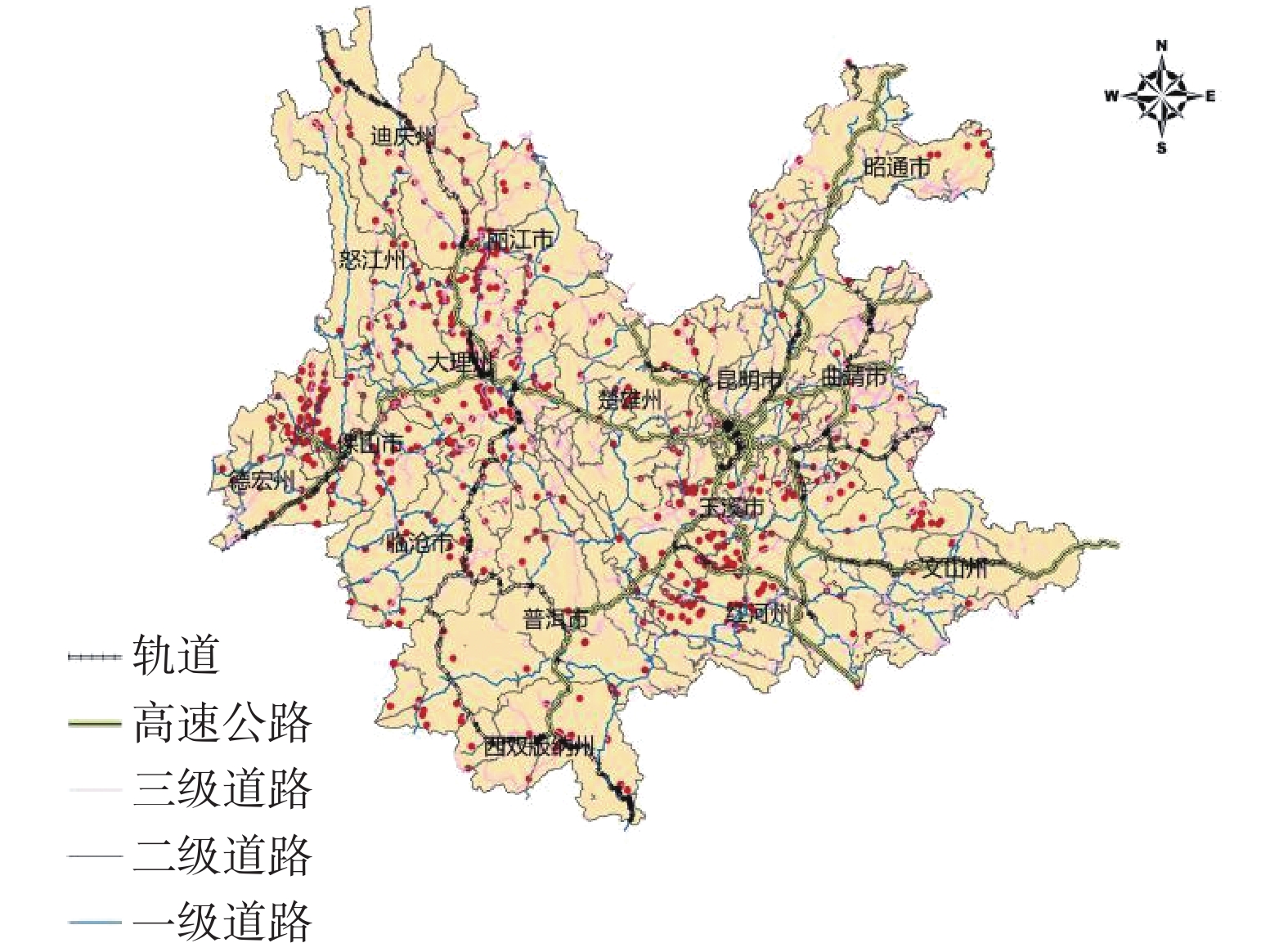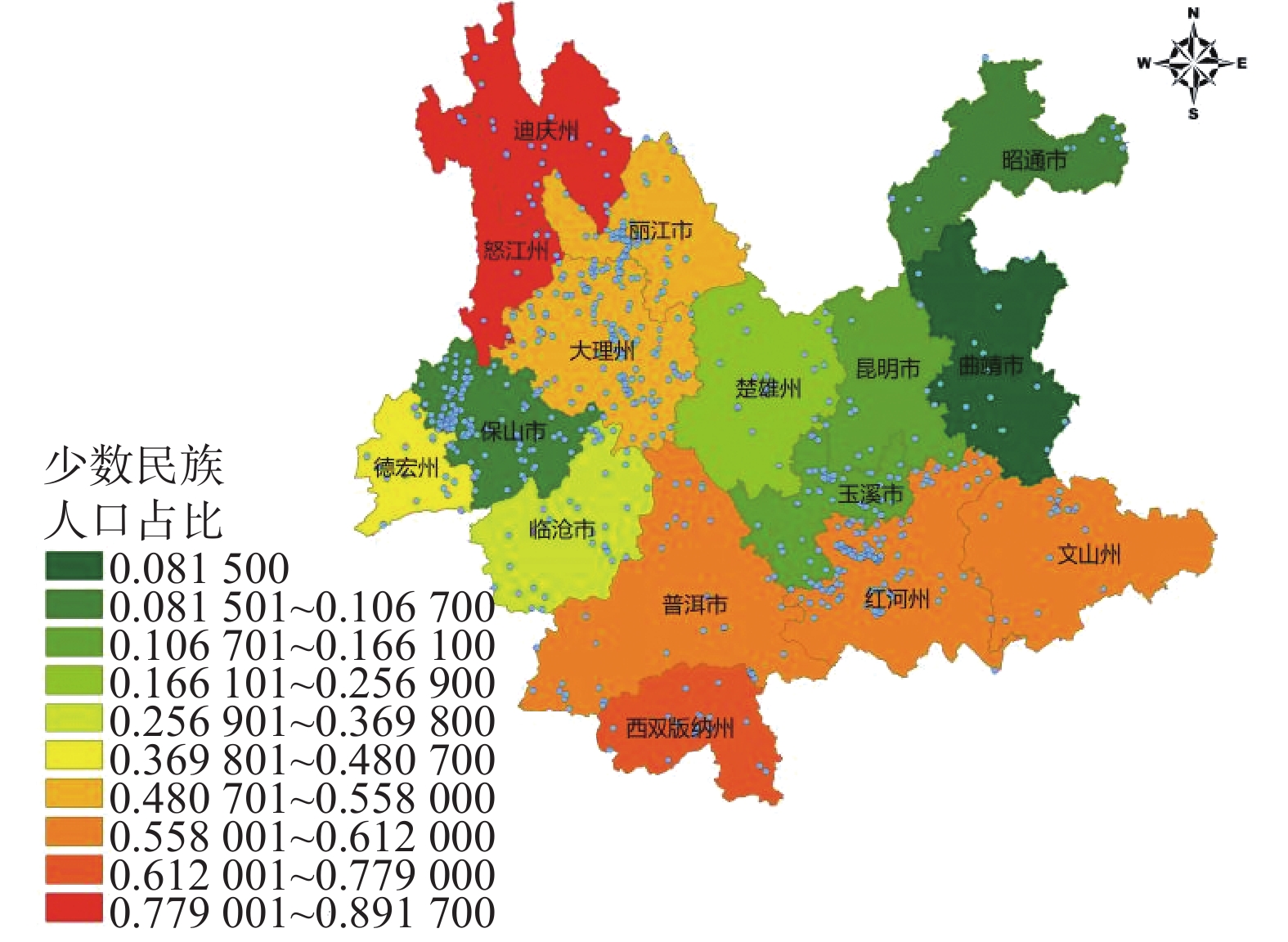The Spatial Distribution and Influencing Factors of Traditional Villages in Yunnan Province Based on GIS
-
摘要:
以云南省传统村落为研究对象,以第1~5批入选中国传统村落名录的708个村落的空间分布数据为基础,采用GIS中的最近邻指数、核密度分析、地理加权回归模型等方法,研究云南省传统村落的空间分布特点及其影响因素,得出以下结论:(1)云南省传统村落的空间分布总体上呈现“大分散,小集聚”的格局;(2)村落空间分布随入选时间顺序呈现出由分散到集中并不断向核心集聚区强化的变化特征;(3)在所分析的影响因素中,自然地理环境要素对传统村落的分布影响较为直接;(4)社会经济影响因素中,交通区位的影响较为明显,且与交通的可达性呈反向相关;(5)少数民族人口占比较多且民族类型较单一的区域,传统村落聚集度相对较高。
Abstract:This paper focused on traditional villages in Yunnan Province, utilizing spatial distribution data from 708 villages listed in the first to fifth batches of China’ s Traditional Village Directory. Various analytical methods, including nearest neighbor index, kernel density analysis, and geographically weighted regression models, were employed using GIS software to analyze the distribution of traditional villages and the factors influencing this distribution. The research findings were as follows: (1) The spatial distribution of traditional villages in Yunnan Province generally exhibited a pattern characterized by “large dispersion, small agglomeration” . (2) The spatial distribution structure of villages evolved over time, transitioning from dispersion to concentration, and progressively strengthening agglomeration in core areas as the selection time progresses. (3) Among the analyzed influencing factors, natural geographic elements had a more direct impact on the distribution of traditional villages. (4) Within the realm of socio-economic factors, the impact of transportation location was notably significant and exhibits an inverse correlation with transportation accessibility. (5) Regions with a higher proportion of a single ethnic group among the ethnic minority population tended to exhibit a higher level of agglomeration of traditional villages.
-
-
[1] 王倩, 宋立中, 杨秀成, 等. 基于GIS的山西阳泉传统村落空间分布及旅游开发研究[J]. 山西师范大学学报(自然科学版), 2020, 34(3): 117. DOI: 10.16207/j.cnki.1009-4490.2020.03.020. [2] JIA A, LIANG X, WEN X, et al. GIS-Based Analysis of the Spatial Distribution and Influencing Factors of Traditional Villages in Hebei Province, China[J]. Sustainability, 2023, 15(11). DOI: 10.3390/SU15119089.
[3] 李庆杰, 刘悦, 李华, 等. 基于GIS的江西传统村落空间分布特征及影响因素研究[J]. 绿色科技, 2022, 24(21): 7. DOI: 10.16663/j.cnki.lskj.2022.21.042. [4] 佟玉权. 基于GIS的中国传统村落空间分异研究[J]. 人文地理, 2014, 29(4): 44. DOI: 10.13959/j.issn.1003-2398.2014.04.037. [5] 董艳平, 刘树鹏. 基于GIS的山西省传统村落空间分布特征研究[J]. 太原理工大学学报, 2018, 49(5): 771. DOI: 10.16355/j.cnki.issn1007-9432tyut.2018.05.019. [6] 胡燕, 陈晟, 曹玮, 等. 传统村落的概念和文化内涵[J]. 城市发展研究, 2014, 21(1): 10. DOI: 10.3969/j.issn.1006-3862.2014.01.021. [7] 明庆忠, 童绍玉. 云南地理[M]. 北京: 北京师范大学出版社, 2016: 483. [8] 国家法律法规数据库. 云南省历史文化名城名镇名村名街保护条例[R/OL]. (2008 − 01 − 01)[2023 − 09 − 13]. https://flk.npc.gov.cn/detail2.html?NDAyOGFiY2M2MTI3Nzc5MzAxNjEyODQ3MDI1MjA2MWQ%3D. [9] 云南省人民政府网. 云南省人民政府办公厅关于加强传统村落保护发展的指导意见[R/OL]. (2020 − 05 − 25)[2023 − 09 − 13]. https://www.yn.gov.cn/zwgk/zcwj/zxwj/202005/t20200525_204539.html. [10] 云南省人民政府网. 关于印发云南省“十四五”城乡建设与历史文化保护传承规划的通知[R/OL]. (2021 − 12 − 31)[2023 − 09 − 13].https://www.yn.gov.cn/bsfw/ztfw/zfly/zflywyk/202210/t20221012_248616.html. [11] 邓龙奎. 中国化马克思主义社会有机体理论视域下的统筹城乡发展研究: 以重庆市统筹城乡综合配套改革为例[J]. 重庆科技学院学报(社会科学版), 2011(1): 36. DOI: 10.19406/j.cnki.cqkjxyxbskb.2011.01.014. [12] 张富刚, 刘彦随. 中国区域农村发展动力机制及其发展模式[J]. 地理学报, 2008(2): 115. DOI: 10.3321/j.issn:0375-5444.2008.02.001. [13] 刘彦随, 周扬, 李玉恒. 振兴中国乡村地域系统与乡村战略[J]. 地理学报, 2019, 74(12): 2511. DOI: 10.11821/dlxb201912007. [14] 曹智, 刘彦随, 李裕瑞, 等. 中国专业村镇空间格局及其影响因素[J]. 地理学报, 2020, 75(8): 1647. DOI: 10.11821/dlxb202008007. [15] 李皙雯, 唐雪琼. 云南省传统村落的空间分布及其影响因素[J]. 红河学院学报, 2017, 15(1): 59. DOI: 10.13963/ j.cnki.hhuxb.2017.01.017. [16] 王洪桥, 袁家冬, 孟祥君. 东北地区A级旅游景区空间分布特征及影响因素[J]. 地理科学, 2017, 37(6): 895. DOI: 10.13249/j.cnki.sgs.2017.06.011. [17] 朱韵林, 郑溪. 云南省大理白族自治州传统村落的空间分布特征及其影响因素研究[A]. 中国城市规划学会、成都市人民政府. 面向高质量发展的空间治理:2021中国城市规划年会论文集(16乡村规划)[C]//中国城市规划学会、成都市人民政府: 中国城市规划学会, 2021: 991−1000. [18] 杨青. 基于GIS的贵州省传统村落空间分布特征与保护发展策略研究[D]. 贵阳: 贵州财经大学, 2022. [19] 高凡清. 云南省传统村落流域分异研究[D]. 昆明: 云南师范大学, 2022. [20] 王培家, 章锦河, 孙枫, 等. 中国西南地区传统村落空间分布特征及其影响机理[J]. 经济地理, 2021, 41(9): 204. DOI: 10.15957/j.cnki.jjdl.2021.09.021. [21] 李琴, 明庆忠, 陆保一, 等. 边疆省区国家级传统村落可达性空间分异及其影响因素: 以云南省为例[J]. 云南师范大学学报(自然科学版), 2022, 42(4): 70. DOI: 10.7699/j.ynnu.ns-2022-054. [22] 邓璐. 云南省红河县哈尼族传统村落空间特征分析[D]. 北京: 北京建筑大学, 2019. [23] 史祎雯, 朱喜钢, 孙洁, 等. 云南省传统村落空间分布特征及其影响因素研究[J]. 资源开发与市场, 2022, 38(7): 809. DOI: 10.3969/j.issn.1005-8141.2022.07.006. -
期刊类型引用(3)
1. 辛立秋,黄龙,孙宇. 税收优惠、融资约束对农业上市公司经营绩效的影响研究. 东北农业大学学报(社会科学版). 2022(04): 53-60 .  百度学术
百度学术
2. 范婧. 基于财务角度的农业产业化龙头企业发展绩效的内部影响因素分析. 商业经济. 2021(07): 125-129 .  百度学术
百度学术
3. 吴铖铖,吴自爱,宋桂娥,陈素平. 高管薪酬、高管薪酬差距对企业经营绩效的影响——基于农业上市公司的实证研究. 重庆科技学院学报(社会科学版). 2020(06): 43-48 .  百度学术
百度学术
其他类型引用(12)




 下载:
下载:
